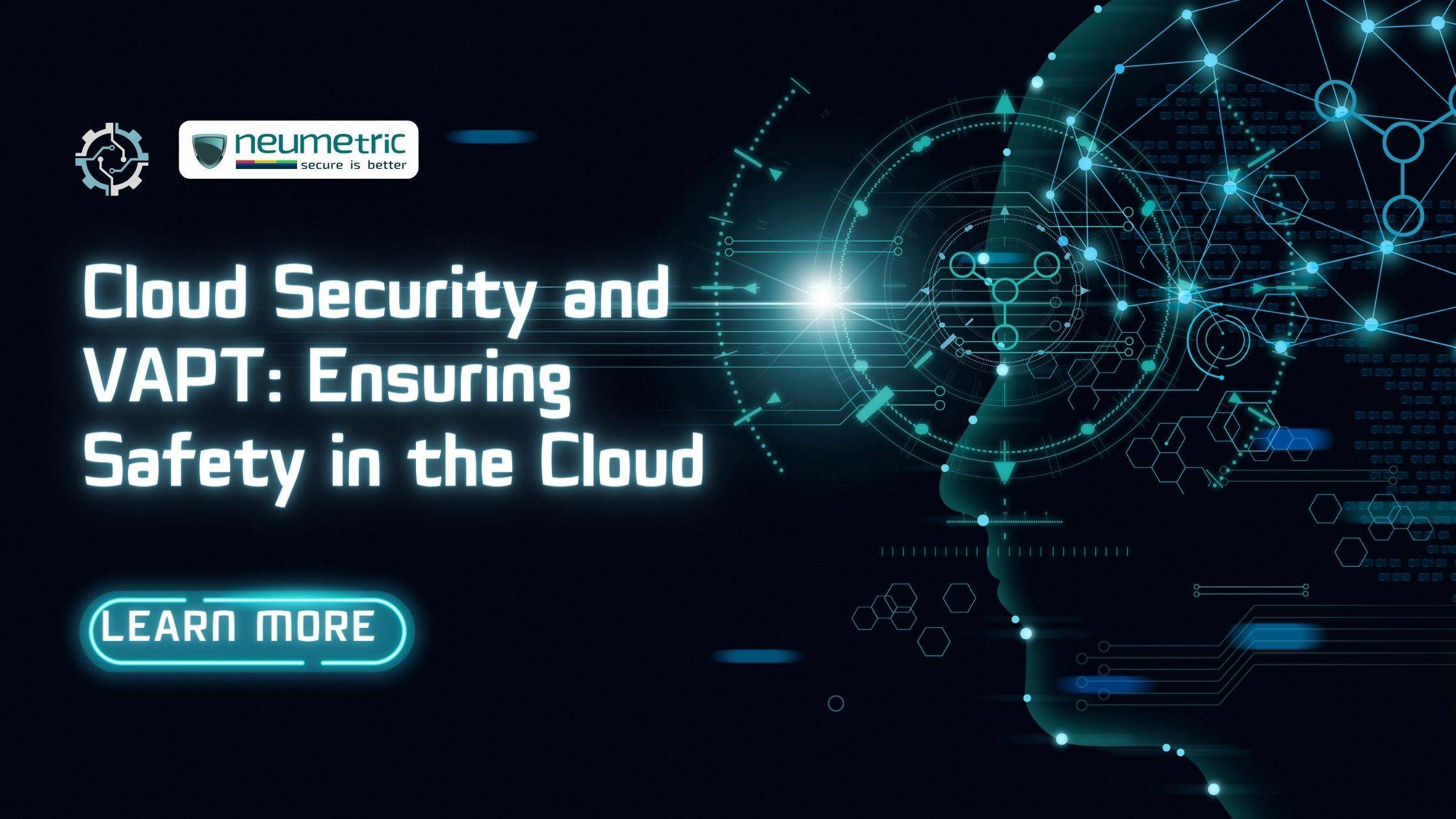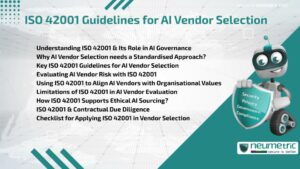Table of Contents
ToggleIntroduction
Cloud computing is like having a virtual extension of your computer or business infrastructure over the internet. It allows you to access data, applications, and services stored on remote servers instead of local devices. This technology has revolutionised the way businesses operate, offering flexibility, scalability, and cost-efficiency.
Security within the cloud is paramount. With data stored offsite, safeguarding it becomes a shared responsibility between the cloud service provider and the user. Any vulnerability or breach could compromise sensitive information, leading to severe consequences such as financial losses or damaged reputation.
VAPT is a proactive approach used to identify and address security vulnerabilities within a system. It involves two main components: vulnerability assessment, which detects weaknesses, and penetration testing, where these weaknesses are exploited to gauge the system’s robustness.
Understanding Cloud Security
- Types of Cloud Services (IaaS, PaaS, SaaS):
Cloud services encompass Infrastructure as a Service (IaaS), Platform as a Service (PaaS), and Software as a Service (SaaS). IaaS offers virtualized computing resources like servers, storage, and networking. PaaS provides a platform for developers to build, deploy, and manage applications without worrying about underlying infrastructure. SaaS delivers software applications over the internet, allowing users to access them from various devices without installation.
- Common Security Threats in the Cloud:
Security threats in cloud environments pose substantial risks to data and operations. Data breaches involve unauthorised access to sensitive information, potentially resulting in financial losses and reputational damage. Insider threats emerge from within an organisation, where employees or insiders misuse their access to compromise data or systems. DDoS attacks flood a system with excessive traffic, rendering it inaccessible to legitimate users. Misconfigured implementations, whether in the setup or management of cloud infrastructure, create vulnerabilities, potentially exposing sensitive data to cyber threats.
Fundamentals of VAPT
Vulnerability Assessment and Penetration Testing (VAPT) constitutes a proactive approach to evaluate and fortify a system’s security. It involves a comprehensive review, identification, and mitigation of vulnerabilities. The process incorporates two primary components: vulnerability assessment, which involves the systematic inspection of potential weaknesses, and penetration testing, where simulated attacks are launched to assess the system’s defences and response mechanisms.
VAPT endeavours to identify and rectify potential system vulnerabilities before they can be exploited by malicious actors. By doing so, it mitigates security risks, protects sensitive data, ensures compliance with regulatory standards such as GDPR and HIPAA, and fortifies the overall security posture of an organisation. The continuous application of VAPT aids in maintaining a robust and resilient security infrastructure in the face of evolving cyber threats.
Vulnerability Assessment encompasses the identification, classification, and prioritisation of vulnerabilities within a system or network. Penetration Testing involves replicating real-world attack scenarios to exploit identified vulnerabilities, gauging the system’s capability to withstand such attacks.
VAPT employs diverse methodologies like black-box testing (external testing with no prior knowledge), white-box testing (internal testing with full system knowledge), and grey-box testing (partially informed testing) to simulate various attack scenarios. These approaches aid in evaluating the system’s resilience and effectiveness against different types of cyber threats.
This detailed explanation provides an in-depth understanding of cloud services, security threats, and the fundamental aspects of Vulnerability Assessment and Penetration Testing (VAPT), shedding light on their significance in safeguarding digital assets and systems.
Cloud Security Measures
- Encryption Techniques in the Cloud:
Encryption serves as a crucial mechanism to secure data in transit and at rest within the cloud. It involves the transformation of data into an unreadable format using cryptographic algorithms. Robust encryption techniques ensure that even if unauthorised entities intercept the data, they cannot decipher it without the encryption keys, thus maintaining data confidentiality and integrity.
- Identity and Access Management (IAM):
IAM plays a pivotal role in controlling and managing user access to resources within a cloud environment. It encompasses authentication, authorization, and management of user identities and permissions. IAM ensures that only authorised users have access to specific data or services, reducing the risk of unauthorised access and potential security breaches.
- Security Compliance and Regulations:
Regulatory standards such as the General Data Protection Regulation (GDPR) and Health Insurance Portability and Accountability Act (HIPAA) mandate stringent security measures for handling sensitive data. Compliance with these regulations is crucial to avoid legal penalties and maintain trust with customers by ensuring the protection and privacy of their data.
- Security Best Practices for Cloud Deployment:
Implementing best practices is essential to bolster cloud security. Regular updates and patches for applications and systems ensure protection against known vulnerabilities. Strong access controls, including multi-factor authentication, limit unauthorised access. Continuous monitoring and auditing of the cloud infrastructure help identify and address security issues promptly.
Implementing VAPT in Cloud Environments
As businesses increasingly rely on cloud services, conducting VAPT becomes imperative to identify and mitigate vulnerabilities specific to cloud environments. VAPT ensures robust security measures are in place, safeguarding against potential cyber threats and unauthorised access to sensitive data stored in the cloud.
Complexities inherent in cloud infrastructures, shared responsibilities between cloud service providers and users, and the dynamic nature of cloud environments pose challenges in executing effective VAPT. Understanding these challenges is crucial to conducting comprehensive security assessments in cloud setups.
To effectively conduct VAPT in a cloud environment, a systematic approach is essential. This involves meticulous planning and preparation, vulnerability scanning to identify weaknesses, penetration testing to simulate attacks and assess system defences, and thorough reporting with prioritised remedial actions to address identified vulnerabilities.
Tools and Technologies for Cloud Security and VAPT
Tools such as Nessus, Metasploit, OpenVAS, and Burp Suite are widely utilised for vulnerability scanning, penetration testing, and identifying weaknesses in cloud configurations. These tools offer comprehensive scanning capabilities, aiding in the identification and mitigation of vulnerabilities specific to cloud environments.
Automation tools like Security Information and Event Management (SIEM) platforms, orchestration frameworks, and automated incident response systems streamline security operations. They facilitate faster detection and response to security incidents, reducing human errors and enhancing the overall efficiency of security measures in cloud setups.
Innovations in cloud security continue to evolve. AI-driven security analytics enable proactive threat detection by analysing patterns and anomalies in real-time, enhancing the ability to predict and prevent potential cyber threats. Blockchain technology offers secure and tamper-proof transaction records, ensuring the integrity and authenticity of data stored in the cloud.
Conclusion
In conclusion, ensuring robust cloud security demands a multi-faceted approach. From understanding the nuances of cloud services to implementing VAPT, encryption, and leveraging cutting-edge technologies, businesses can fortify their cloud environments against ever-evolving cyber threats. Embracing these strategies and staying updated with evolving security measures is pivotal in safeguarding sensitive data and maintaining trust in an increasingly cloud-driven world.
FAQs:
How do encryption techniques contribute to securing data in the cloud?
Encryption serves as a shield for data stored in the cloud by transforming it into an unreadable format using complex algorithms. Even if intercepted, encrypted data remains unintelligible without the decryption keys, ensuring confidentiality and preventing unauthorised access. Robust encryption techniques help protect data at rest and in transit, bolstering the overall security of cloud-stored information.
How do insider threats pose a significant risk to cybersecurity, and what measures can be taken to combat them?
Encryption serves as a shield for data stored in the cloud by transforming it into an unreadable format using complex algorithms. Even if intercepted, encrypted data remains unintelligible without the decryption keys, ensuring confidentiality and preventing unauthorised access. Robust encryption techniques help protect data at rest and in transit, bolstering the overall security of cloud-stored information.
Question: What are some challenges involved in conducting Vulnerability Assessment and Penetration Testing (VAPT) in cloud environments?
Conducting VAPT in cloud environments presents several challenges owing to the complexities and dynamic nature of these setups. Shared responsibilities between cloud service providers and users, intricate cloud infrastructures, and the constantly evolving threat landscape pose hurdles. Understanding these challenges is crucial for effective VAPT execution, ensuring thorough security assessments and the mitigation of vulnerabilities specific to cloud environments.





